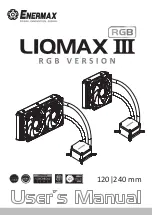
13/14
Siemens Building Technologies
CC1A7865.1en
HVAC Products
31.10.2002
The previous functions of the RWF40... are maintained (apart from memory usage).
The RWF40... can be parameterized and uploaded via the MOD bus, whereby the out-
puts cannot be changed. After «Power-up», the RWF40... will normally assume oper-
ating mode «LOCAL».
The RWF40... monitors cyclic bus communication via the «Dtt» parameter (bus detec-
tion timer). Operating mode «REMOTE SETPOINT» is active as long as the bus calls
within the predefined period of time. If the time limit is crossed, the RWF40... will switch
to operating mode «LOCAL» and continues to operate using the parameters of local
operation.
Like in operating mode «LOCAL», the control functions of the RWF40... are maintained.
With regard to setpoint and switching thresholds, only «RSP» and «RHYS1...RHYS3»
are active. The setpoints (SP1 and SP2), the external setpoint, the weather-
compensated setpoint, the analog / binary setpoint shift and the associated changeover
functions are not available.
After the controller’s «Power-up», setpoint «SP1» and switching thresholds
«Hys1...Hys3» will be copied to RAM as remote parameters in a one-time operation.
These remote parameters can then only be changed via the management system.
The control algorithm can be deactivated by the management system via parameter
«ROFF=1». In that case, the RWF40... will switch the burner off and causes the con-
trolling element to travel to the fully closed position. The controller terminates manual
operation (analog safety shutdown).
Self-optimization is not possible in this operating mode.
The management system controls contact «RK6» (relay «K6»).
The RWF40... monitors cyclic bus communication via the «Dtt» parameter (bus detec-
tion timer). Operating mode «FULLY REMOTE» is active as long as the bus calls within
the predefined period of time. If the time limit is crossed, the RWF40... will switch to
operating mode «LOCAL» and continues to operate using the parameters of local op-
eration.
The management system switches the burner (RK1, relay «K1»), controls the actuator
(RK2 and RK3, relays «K2 / K3»), or defines the degree of modulation in the case of an
analog output, and controls contact «RK6» (relay «K6»).
Using parameter «ROFF=1», control of the burner and controlling element can be
switched off by the management system. In that case, the RWF40... deactivates the
burner and causes the controlling element to travel to the fully closed position.
Manual operation and self-optimization are not possible in this operating mode.
2-stage burner:
If, with a 2-stage burner, relay positions «RK2» and «RK3» are identical, the settings
are «K2 = deenergized» and «K3 = energized» (closing).
The analog output is set as follows, depending on the relay positions «RK2» and
«RK3»:
K2 = energized, K3 = deenergized
®
analog output = 10 V or 20 mA
K2 = deenergized, K3 = energized
®
analog output = 0 V or 0 / 4 mA
Setting the «RY» by the management system has no impact.
Operating mode
«LOCAL»
Operating mode
«REMOTE SETPOINT»
Operating mode
«FULLY REMOTE»
































